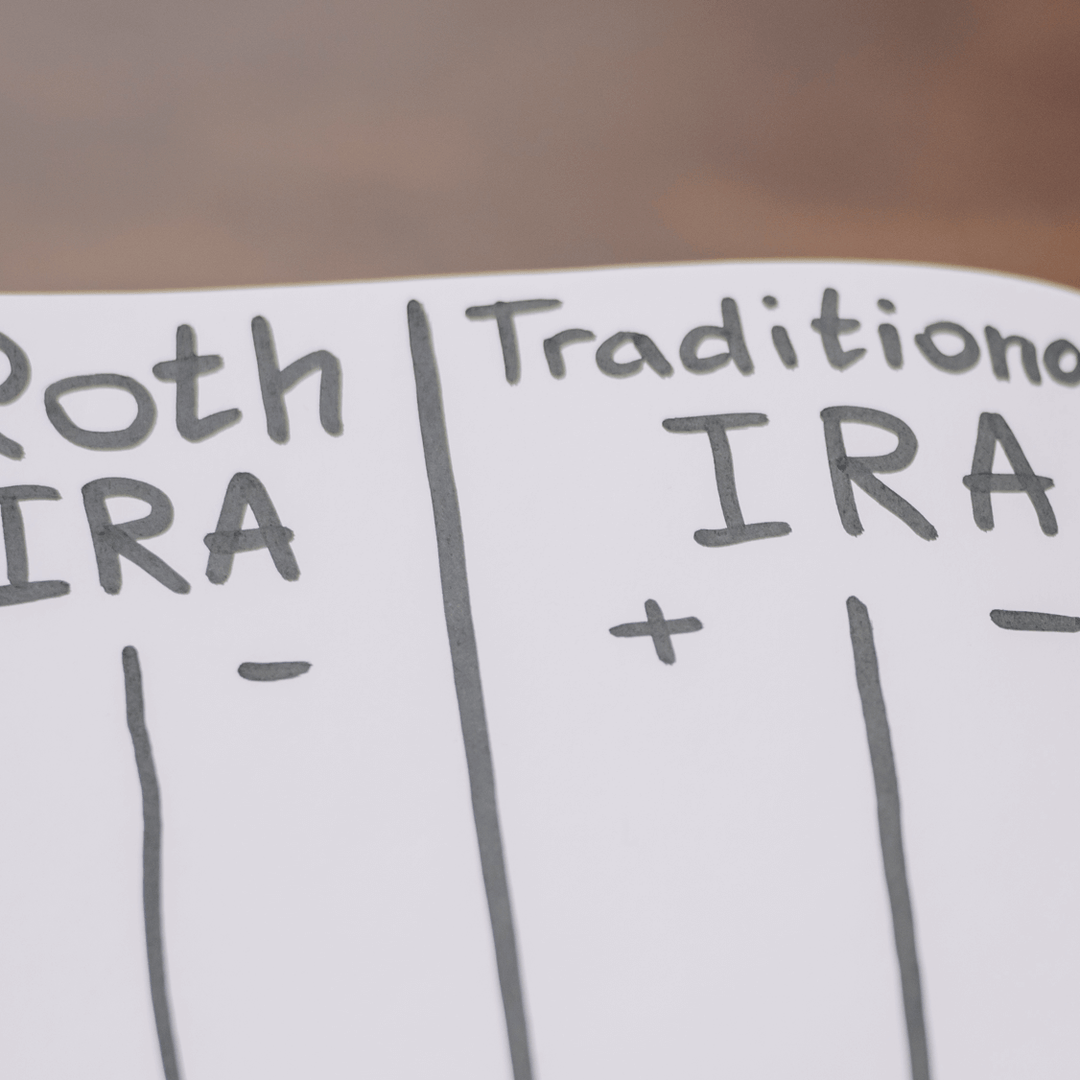The Difference Between Roth and Traditional IRA

Workplace retirement accounts such as 401(k)s aren’t the only way to put away money for retirement. You can also stash your cash in an Individual Retirement Account (or IRA).
Your two main choices are Roth and traditional IRAs. (Other types—such as SEP IRAs, Spousal IRAs, and SIMPLE IRAs—are designed to serve investors in specific situations while Roth and traditional IRAs are more broadly accessible.) Acorns offers both—as well as SEP IRAs—through Later.
What's the difference between a Roth and a traditional IRA?
Mostly, taxes. In both traditional and Roth IRAs, the earnings grow tax-free. (Yay!) But that’s where the tax similarities end. With a traditional IRA, you may be able to deduct your contributions and lower your tax bill now, but you’ll have to pay taxes on the money you withdraw in retirement. With a Roth IRA, the opposite tax treatment is true: You have to contribute money that’s already been taxed, but your withdrawals—including earnings—come out tax-free in retirement (as long as you’ve had the account at least five years).
(By the way, 401(k)s are also available in traditional and Roth flavors, each with the same respective tax rules as their IRA counterparts.)
Which is a better deal?
It depends. Generally speaking, if you expect to be in a higher tax bracket when you withdraw the money—perhaps because you plan (or hope) for your income to rise with your age, or maybe because you think we might see changes in the tax code that push rates up—going with a Roth is the better choice. That’s because you’ll pay no taxes on your distributions, including any earnings, if you’re 59½ or older and have had the account at least five years. Another benefit of the Roth IRA is that you can withdraw your contributions at any time without paying taxes.
On the other hand, a traditional IRA may make sense if you are able to deduct your contributions now and you think your tax rate will be lower when you tap the account—like, say, if you plan to retire by 60.
So it’s really all about taxes?
You have some other factors to consider when comparing these two types of retirement accounts, too. Like, are you even eligible to reap the full benefits of these accounts?
To max out a Roth IRA contribution, you must have earned less than $124,000 in 2020, or $196,000 if you’re married and filing jointly. There are no income limitations to contribute to a traditional IRA, but to claim the full tax deduction for 2020, your adjusted gross income must be less than $65,000 if you're single, or $104,000 for married couples filing jointly, if you’re also covered by a retirement plan at work. If neither you nor your spouse has access to a work plan, there are no income limits.
Traditional accounts also have certain age restrictions. Once you reach the year you turn 72, you must start taking required minimum distributions (or RMDs). Roth IRAs have no RMDs.
Wait. What are RMDs?
They’re the IRS’s way of making sure you pay taxes on your retirement savings at some point. Since your contributions to a traditional IRA are deductible, Uncle Sam has to set a limit on how long you can defer that tax bill. So after you reach age 72, you have to start making annual withdrawals of IRS-determined amounts.
How much you need to take out depends on your account balance at the end of the previous year and which birthday you’re celebrating that year. You can use the IRS RMD Worksheet or any number of online RMD calculators to figure out the exact amount for yourself. And it’s important to get it right: If you lowball how much you take out, or if you miss an RMD deadline, you may have to pay a penalty of 50 percent of whatever amount you owe, plus taxes. Ouch!
So should I go with a Traditional or Roth IRA?
Some experts swear by the Roth. That’s partly because, assuming you don’t need to tap the account early, your final account balance before you start withdrawing should far exceed the amount you contribute. And they reason that you’d rather pay taxes on the smaller sum. If you save $6,000 a year for 30 years, for example, your total contribution adds up to $180,000—but with an average 6 percent annual return, you end up with more than double that amount. With the Roth option, you’d be paying taxes on the $180,000 that you contributed rather than the much bigger final total.
Plus, no RMDs means you can let the money in your Roth grow pretty much forever. You can then leave the entire account to your loved ones, if you want, and let your heirs sort out what to do with all those funds next.
Bonus with a Roth IRA: You can also withdraw the contributions you made anytime without having to pay taxes or penalties, making it a much more flexible savings option. But if you dip into the earnings portion of the account before age 59½ or before it’s been open for at least five years, you may have to pay taxes and a 10-percent early withdrawal penalty. (In certain situations, like buying a first home or paying for qualified education expenses, you’re exempt from this rule, so you can avoid the penalty.)
Another strategy you can try is using both account types in your overall retirement savings plan. Considering people’s inability to predict the future (we assume), many experts recommend hedging your bets and diversifying your tax advantages. For example, if you have a traditional 401(k) through your employer, you may be better off with a Roth IRA. That way, you have your bases covered no matter what happens with your tax situation over time.
You can even have both a traditional IRA and a Roth IRA. Note though that contribution limits apply for all your IRAs. So if you do decide to use both retirement savings vehicles, you can only contribute a total of $6,000 between them in 2020.
No matter which type of IRA you use, the most important thing is that you're saving for retirement in a tax efficient way.
This material has been presented for informational and educational purposes only. The views expressed in the articles above are generalized and may not be appropriate for all investors. The information contained in this article should not be construed as, and may not be used in connection with, an offer to sell, or a solicitation of an offer to buy or hold, an interest in any security or investment product. There is no guarantee that past performance will recur or result in a positive outcome. Carefully consider your financial situation, including investment objective, time horizon, risk tolerance, and fees prior to making any investment decisions. No level of diversification or asset allocation can ensure profits or guarantee against losses. Article contributors are not affiliated with Acorns Advisers, LLC. and do not provide investment advice to Acorns’ clients. Acorns is not engaged in rendering tax, legal or accounting advice. Please consult a qualified professional for this type of service.








